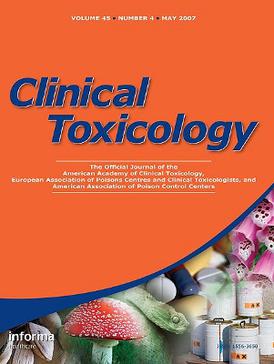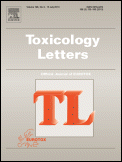
Toxicology is a scientific discipline, overlapping with biology, chemistry, pharmacology, and medicine, that involves the study of the adverse effects of chemical substances on living organisms and the practice of diagnosing and treating exposures to toxins and toxicants. The relationship between dose and its effects on the exposed organism is of high significance in toxicology. Factors that influence chemical toxicity include the dosage, duration of exposure, route of exposure, species, age, sex, and environment. Toxicologists are experts on poisons and poisoning. There is a movement for evidence-based toxicology as part of the larger movement towards evidence-based practices. Toxicology is currently contributing to the field of cancer research, since some toxins can be used as drugs for killing tumor cells. One prime example of this is ribosome-inactivating proteins, tested in the treatment of leukemia.

Permethrin is a medication and an insecticide. As a medication, it is used to treat scabies and lice. It is applied to the skin as a cream or lotion. As an insecticide, it can be sprayed onto clothing or mosquito nets to kill the insects that touch them.

Environmental toxicology is a multidisciplinary field of science concerned with the study of the harmful effects of various chemical, biological and physical agents on living organisms. Ecotoxicology is a subdiscipline of environmental toxicology concerned with studying the harmful effects of toxicants at the population and ecosystem levels.

The Annual Review of Pharmacology and Toxicology is a peer-reviewed academic journal that publishes review articles about pharmacology and toxicology. It was first published in 1961 as the Annual Review of Pharmacology, changing its name in 1976 to the present title. As of 2022, it has an impact factor of 16.459.

Clinical Toxicology is a peer-reviewed medical journal of clinical toxicology. It is published by Taylor and Francis and is the official journal of the American Academy of Clinical Toxicology, the European Association of Poisons Centres and Clinical Toxicologists, the American Association of Poison Control Centers and the Asia Pacific Association of Medical Toxicology. The editor-in-chief is Steven A. Seifert. The journal is published in 12 issues per year in simultaneous print and online editions.

Drug and Chemical Toxicology is a bimonthly peer-reviewed medical journal that publishes full-length research papers, review articles, and short communications that encompass a broad spectrum of toxicological data surrounding risk assessment and harmful exposure. It is published by Taylor & Francis and the editor in chief is Marc A. Williams.
Mutation Research is a peer-reviewed scientific journal that publishes research papers in the area of mutation research which focus on fundamental mechanisms underlying the phenotypic and genotypic expression of genetic damage. There are currently three sections:

Toxicology is a peer-reviewed scientific journal covering the adverse effects of xenobiotics on the health of humans and other animals. It is affiliated with the German Toxicology Society.

Toxicology and Applied Pharmacology is a scientific journal for original research pertaining to action of chemicals, drugs, or natural products to animals or humans. The journal covers mechanistic approaches to physiological, biochemical, cellular, or molecular understanding of toxicologic/pathologic lesions and to methods used to describe these responses.

Toxicology Letters is a peer-reviewed scientific journal for the rapid publication of short reports on all aspects of toxicology, especially mechanisms of toxicity. Toxicology Letters is the official journal of Eurotox. (Eurotox exists as a Society within the meaning of Art. 60 et seq. of the Swiss Civil Code. The registered address of Eurotox is in Basel.)
Toxicological Sciences is a monthly peer-reviewed scientific journal which covers all aspects of research on toxicology. It is published by Oxford University Press on behalf of the Society of Toxicology. It was established in 1981 as Fundamental and Applied Toxicology and obtained its current name in 1998. The current editor-in-chief is Jeffrey M. Peters, a professor of molecular toxicology and carcinogenesis at The Pennsylvania State University, and the Managing Editor is Virginia F. Hawkins. The editorial staff also includes Associate Editors in subject areas and an editorial board of topic experts. While its ISO 4 abbreviation is Toxicol. Sci. it is commonly referred to as ToxSci.
Food and Chemical Toxicology is a peer-reviewed scientific journal covering aspects of food safety, chemical safety, and other aspects of consumer product safety. It is published by Elsevier and was established in 1963. The editor-in-chief is José L. Domingo.
Regulatory Toxicology and Pharmacology is a monthly peer-reviewed scientific journal which covers legal aspects of toxicological and pharmacological regulations. It is published by Elsevier on behalf of the International Society of Regulatory Toxicology & Pharmacology. The current co-editors-in-chief are Lesa L. Aylward and Martin van den Berg.

The Journal of Toxicology and Environmental Health is a peer-reviewed public health journal covering environmental toxicology. It was established in 1975 and in 1998 was split into Part A: Current Issues and Part B: Critical Reviews. According to the Journal Citation Reports, Part A has a 2012 impact factor of 1.733, whereas Part B has a 2012 impact factor of 3.896.
Archives of Toxicology is a peer-reviewed medical journal covering all aspects of toxicology. It was established in 1930 as Sammlung von Vergiftungsfällen, renamed in 1954 into Archiv für Toxikologie and obtained its current title in 1974. The journal is published by Springer Science+Business Media and the editor-in-chief is Jan G. Hengstler.
Archives of Environmental Contamination and Toxicology is a quarterly peer-reviewed scientific journal published by Springer Science+Business Media, covering environmental health and the effects of contaminants on the environment. It was established in 1973 and the editor-in-chief is Daniel R. Doerge. According to the Journal Citation Reports, the journal has a 2020 impact factor of 2.804.
Environmental Sciences Europe is a peer-reviewed scientific journal covering all aspects of environmental science. It was established in 1989 as Umweltwissenschaften und Schadstoff-Forschung, obtaining its current name in 2011. It is published by Springer Science+Business Media and the editor-in-chief is Henner Hollert. Since 2011, the journal has been open access.

Olanike Kudirat Adeyemo is a Nigerian professor of veterinary public health and preventive medicine at the University of Ibadan. She is the current Deputy Vice Chancellor of research, innovation and strategic partnership, the first person to attain the role at the university. Olanike's research focuses on aquatic and wildlife epidemiology and toxicology, food safety, global public health, aquatic toxicology, and aquatic veterinary medicine. Member of the Steering Committee of the High Level Panel of Experts on Food Security and Nutrition (2022-2024) of the UN Committee on World Food Security.
Environmental Toxicology and Chemistry is a monthly peer-reviewed scientific journal covering environmental toxicology and environmental chemistry. It was established in 1982 and is published by Wiley-Blackwell in conjunction with the Society of Environmental Toxicology and Chemistry. The founding editor-in-chief was C.H. Ward, and the current one is G.A. Burton, Jr.. According to the Journal Citation Reports, the journal has a 2021 impact factor of 4.218, ranking it 117th out of 279 journals in the category Environmental sciences and 29th out of 94 in the category Toxicology.
Toxicology Research is a publication of Oxford University Press as of 2020. The Journal launched in 2012 and focuses on articles that cover biological, chemical, clinical, or environmental health aspects of the toxic response and the mechanisms involved.










